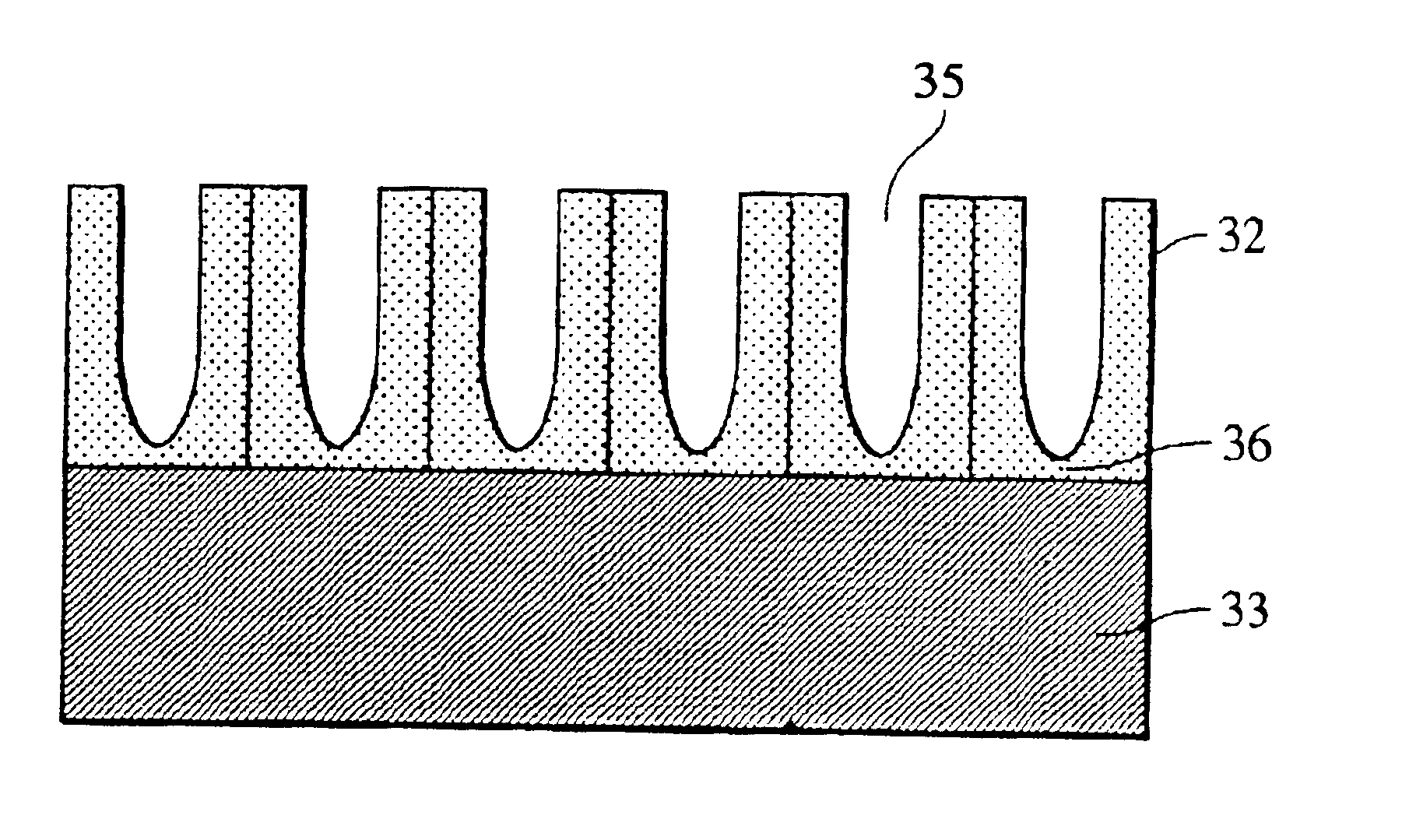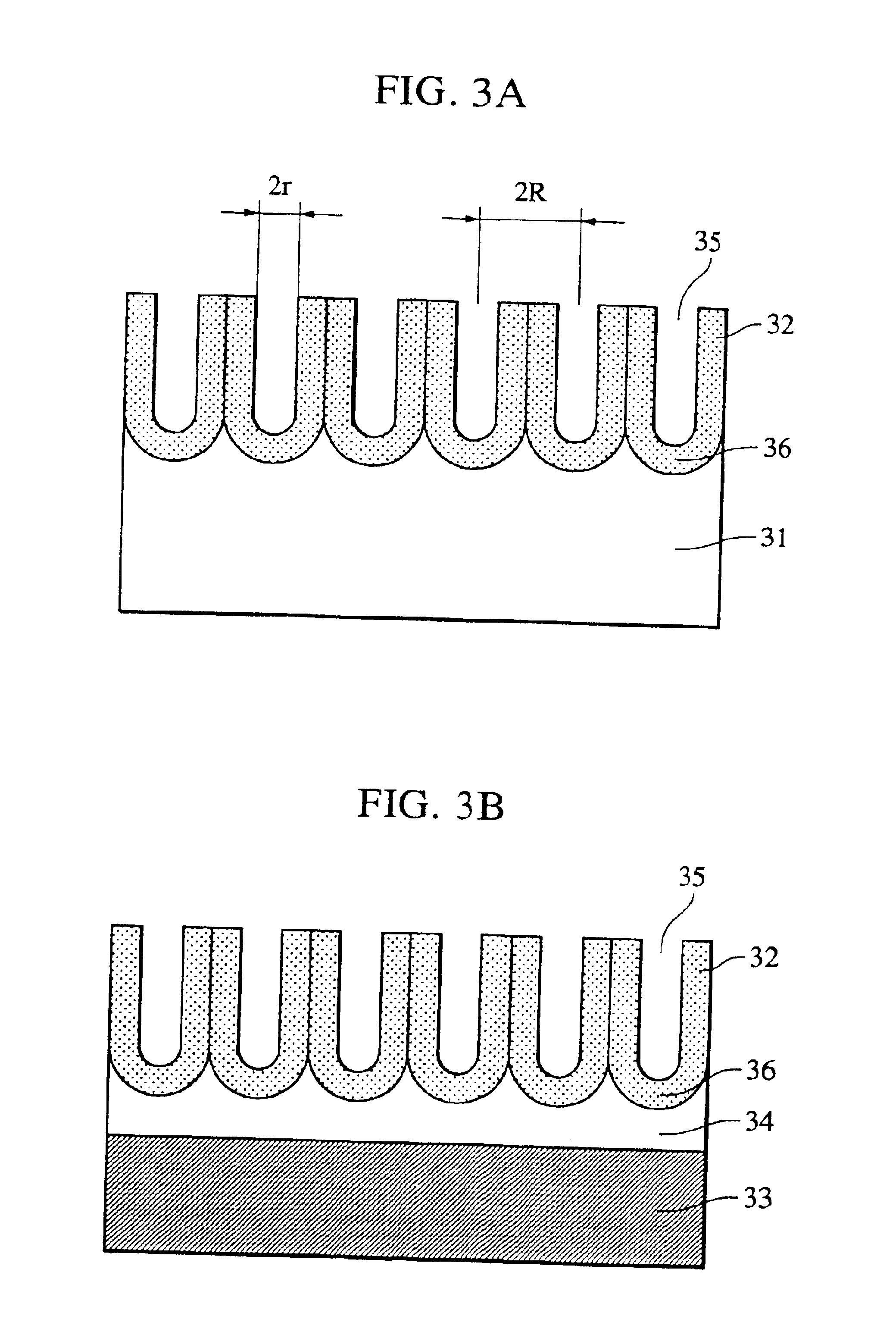Nanostructure, electron emitting device, carbon nanotube device, and method of producing the same
a carbon nanotube and electron-emitting technology, applied in the field of nanostructure and a method of producing the same, can solve the problem of insufficient uniformity of nanoholes, and achieve the effect of good uniform shape and efficient production of carbon nanotube devices
- Summary
- Abstract
- Description
- Claims
- Application Information
AI Technical Summary
Benefits of technology
Problems solved by technology
Method used
Image
Examples
specific embodiments
The present invention is described in further detail below with reference to specific embodiments. It should be understood, however, that the invention is not limited to those embodiments shown here.
first embodiment
The effects of the anodization time in the process of producing nanoholes by anodizing an aluminum film on a silicon substrate were investigated. The result is described below. In this embodiment, mirror polished single-crystal Si substrates of n-type and p-type having a resistivity of 10−2 Ωcm were used as the Si substrate wherein phosphorus-doped silicon substrates were employed as the n-type substrates and boron-doped silicon substrates were employed as the p-type substrates.
a) Formation of an Al Film on the Si Substrates
An aluminum film with a thickness of 300 nm was formed by means of RF sputtering on the surface of three Si substrates of each type (six wafers in total). The RF sputtering process was performed using Ar gas at 30 mTorr with RF power of 500 W.
b) Anodization
Anodization was performed using the anodization apparatus shown in FIG. 6.
In the present embodiment, a 0.3 M aqueous solution of oxalic acid was used as the electrolyte, and the solution was kept at 17° C. usin...
second embodiment
Nanoholes were produced in a similar manner to the first embodiment except that n-type silicon wafers with a resistivity of 0.01 Ωcm were used as the substrate and that the anodization was terminated at point D in FIG. 7.
After producing the nanoholes on the n-type silicon substrate and performing the pore widening process in a similar manner to the first embodiment, Co was electro-deposited thereby forming catalytic fine particles inside the nanoholes. In the above electro-deposition process, a solution consisting of 5% CoSO4.7H2O and 2% H3BO3 was employed as a plating bath and the electro-deposition was performed for 10 sec under application of an AC voltage of 5 V.
One sample was etched by immersing the sample in a 1% aqueous solution of hydrofluoric acid for 10 sec before the electro-deposition process. Another sample was directly subjected to the electro-deposition process without being etched before the electro-deposition process.
The cross section of the samples were observed wi...
PUM
| Property | Measurement | Unit |
|---|---|---|
| size | aaaaa | aaaaa |
| diameters | aaaaa | aaaaa |
| diameters | aaaaa | aaaaa |
Abstract
Description
Claims
Application Information
 Login to View More
Login to View More - R&D
- Intellectual Property
- Life Sciences
- Materials
- Tech Scout
- Unparalleled Data Quality
- Higher Quality Content
- 60% Fewer Hallucinations
Browse by: Latest US Patents, China's latest patents, Technical Efficacy Thesaurus, Application Domain, Technology Topic, Popular Technical Reports.
© 2025 PatSnap. All rights reserved.Legal|Privacy policy|Modern Slavery Act Transparency Statement|Sitemap|About US| Contact US: help@patsnap.com



